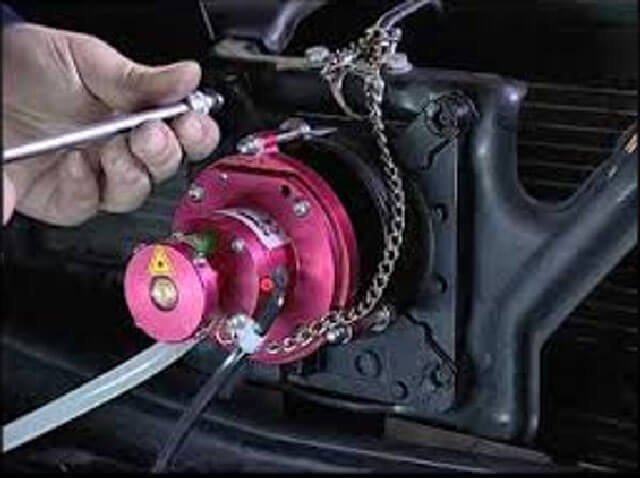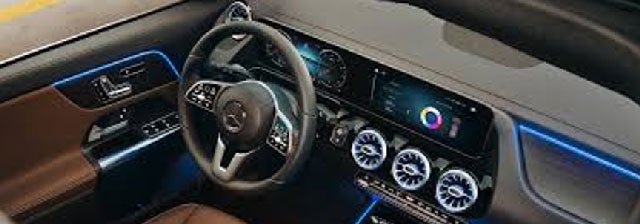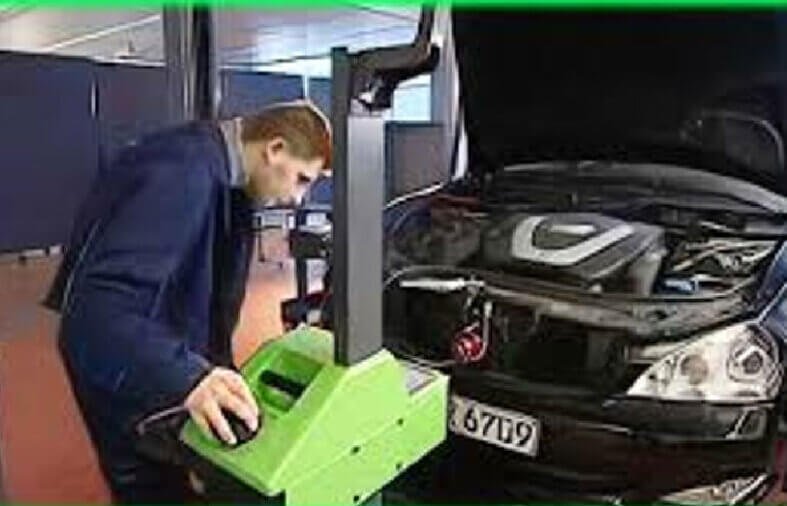The DISTRONIC Plus system in Mercedes-Benz helps control speed and distance from other vehicles, keeping drivers safe. It uses sensors to monitor the road and adjust the car’s speed automatically. If these sensors don’t work properly, safety features like automatic braking may fail. Keeping the sensors accurate is important for smooth driving and preventing accidents. Knowing how these sensors function can help you keep your car safe and reliable.
What Are DISTRONIC Plus Sensors?
DISTRONIC Plus sensors are radar-based devices in Mercedes-Benz cars that help keep a safe distance from other vehicles. These sensors constantly scan the road ahead and adjust your car’s speed automatically when using cruise control. They also play a key role in safety by detecting potential collisions and triggering automatic braking to prevent accidents. DISTRONIC Plus sensors ensure smoother driving and help reduce the risk of accidents by maintaining control over the car’s speed and distance from other cars.
7 Common Issues with DISTRONIC Plus Sensors
DISTRONIC Plus sensors in Mercedes-Benz vehicles are vital for ensuring adaptive cruise control and collision prevention features work smoothly. However, several common issues can arise with these sensors that may affect their performance. Understanding these problems can help you take action before they impact your driving experience.
1. Dirt and debris:
One of the most common issues is dirt or road debris covering the sensors. Sensors located on the front grille or bumper are particularly vulnerable. This blockage can cause the sensors to provide false readings or stop working altogether, leading to warnings or malfunctioning safety features.
2. Physical damage:
Sensors can be damaged by accidents, harsh weather conditions, or even minor impacts. A cracked or misaligned sensor may not function properly and could send inaccurate data to the car’s safety systems.
3. Electrical issues:
Problems with the car’s battery, alternator, or wiring can disrupt the connection between the sensors and the car’s computer system. This can cause intermittent malfunctions, making it difficult to rely on the DISTRONIC Plus system.
4. Moisture buildup:
Water or condensation can collect inside the sensor housing, especially after driving in rain or snow. The moisture can cause the sensor to fail or provide inconsistent data, affecting the car’s ability to maintain safe distances.
5. Tire pressure or size:
Incorrect tire pressure or using the wrong tire size can throw off the calibration of the radar sensors. This can lead to poor performance or false readings from the system.
6. Sensor misalignment:
After repairs or collisions, the sensors may become misaligned. Even a slight misalignment can cause the system to malfunction, as the radar may not accurately detect the distance to other vehicles.
7. Software or system faults:
Sometimes, the problem lies not with the sensors themselves, but with the software controlling the DISTRONIC Plus system. Outdated software or internal glitches may cause the system to fail unexpectedly.
By regularly checking and addressing these common issues, you can keep your DISTRONIC Plus sensors working at their best. Early detection of problems ensures that your car’s safety systems remain reliable and effective.
Step-by-Step Guide – How to Repair DISTRONIC Plus Sensors
If you are in Dubai and your Mercedes DISTRONIC Plus sensors are malfunctioning, you can follow these simple steps to fix them. Keeping your sensors in good shape ensures your adaptive cruise control and safety systems work properly. Here’s how you can repair the sensors:
1. Clean the Sensors
- Dust, sand, or debris can block the sensors, especially in Dubai’s environment. Use a soft cloth with mild soap to gently clean the sensors on the front grille, bumper, and windshield. Make sure to dry them properly to avoid water stains.
2. Check for Damage
- Inspect the sensors for cracks or other damage, especially after a minor accident or bump. If they are damaged, visit Mercedes Experts Dubai to get them replaced.
3. Examine Electrical Connections
- Check the wiring and connectors for any signs of corrosion or looseness. A damaged connection can cause sensor failure. If needed, a Mercedes technician can replace or repair faulty wiring.
4. Recalibrate the Sensors
- After cleaning or fixing the sensors, recalibration may be necessary. This step should be done using specialized tools available at a certified Mercedes service center in Dubai to ensure the sensors are aligned correctly.
5. Check Tire Pressure
- Make sure your tires have the correct pressure as recommended by Mercedes. Incorrect tire pressure can affect sensor performance, causing them to give inaccurate readings.
By following these simple steps, you can fix DISTRONIC Plus sensor issues and ensure your car is running safely on the roads of Dubai. If you’re still facing issues, it’s best to consult a professional for assistance.

Recalibrating Mercedes-Benz DISTRONIC Plus Sensors
Recalibration of DISTRONIC Plus sensors ensures they are properly aligned and functioning after repairs, replacements or any alignment issues. Here’s a breakdown of when and how recalibration is needed to maintain accurate system performance.
When Recalibration is Necessary
Recalibration is essential after:
- Sensor replacements: New sensors must be calibrated to sync with the vehicle’s system.
- Front-end repairs: Any damage or repairs near the sensors can misalign them, requiring recalibration.
- Malfunctions or misalignment: If the system provides inaccurate readings or displays warnings, recalibration might resolve the issue.
Diagnostic Tools Used for Recalibration
Recalibrating DISTRONIC Plus sensors requires specific Mercedes-Benz diagnostic tools:
- Xentry Diagnostic Tool: Used to reset, recalibrate and diagnose issues with the radar sensors.
- Star Diagnosis System (SDS): Helps in reading and adjusting sensor settings to ensure proper alignment.
Importance of Professional Assistance
While minor cleaning or inspection can be done at home, recalibration is a precise task that should always be handled by a certified Mercedes-Benz technician. They have the necessary tools and expertise to ensure that the sensors are accurately realigned with the vehicle’s safety systems.
Proper recalibration ensures that the DISTRONIC Plus system performs optimally, allowing for accurate detection of other vehicles, safe following distances, and reliable collision prevention. To avoid further issues, always seek help from some Professional Car Mechanic in Dubai.

Steps to Take If DISTRONIC Plus Sensor Recalibration Fails
If recalibrating your DISTRONIC Plus sensors doesn’t fix the problem, further troubleshooting is necessary. Here’s what you should do next:
1. Check Tire Pressure and Size
- Incorrect tire pressure or using the wrong tire size can affect the sensor’s accuracy. DISTRONIC Plus sensors rely on the correct tire dimensions and pressure for precise distance readings. If your tires are too inflated or under-inflated, it can throw off the sensors. Make sure your tires are inflated to the proper level as stated in your vehicle manual and ensure they are the correct size.
2. Inspect Electrical Components
- Issues with the car’s electrical system can also cause sensor malfunctions. Check the battery, alternator, and wiring for any faults. A weak battery, loose connections, or damaged wiring can disrupt the sensors’ communication with the car’s computer. If any faults are found, repair or replace these components to restore proper sensor function.
3. Perform Software Updates and Diagnostics
- Sometimes, the issue lies in outdated software or internal system errors. Use diagnostic tools like Xentry or Star Diagnosis to scan for error codes in the car’s system. If necessary, update the software or reprogram the sensors. A Mercedes-Benz technician can perform these updates to fix software-related problems.
4. Look for Physical Damage
- Examine the sensors for any cracks, dents, or water damage. Even minor damage can cause malfunctions. If the sensor is physically damaged, replacement may be necessary.
5. Consult a Mercedes Specialist
- If none of these steps resolve the issue, it’s best to seek help from a certified Mercedes Specialist Dubai. They have the advanced tools and expertise to run a thorough diagnosis and fix the problem.
By following these troubleshooting steps, you can address issues that go beyond recalibration and ensure your DISTRONIC Plus sensors are working properly.
Keeping your DISTRONIC Plus sensors clean and well-calibrated is key to safe driving. These sensors help your car maintain the right distance from other vehicles and prevent accidents. Regular cleaning and calibration ensure your car’s safety features work correctly. If the sensors need repair or recalibration, it’s a good idea to get help from a professional to avoid any errors. This will keep your Mercedes running safely and smoothly on the road.








